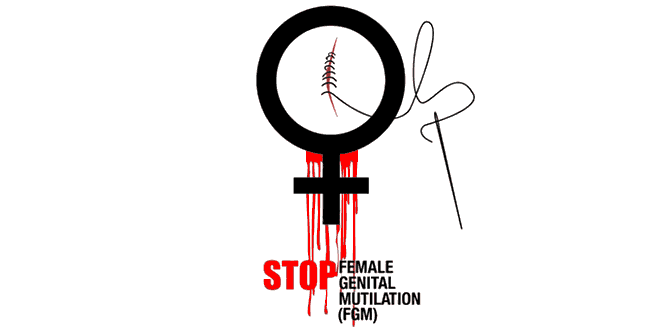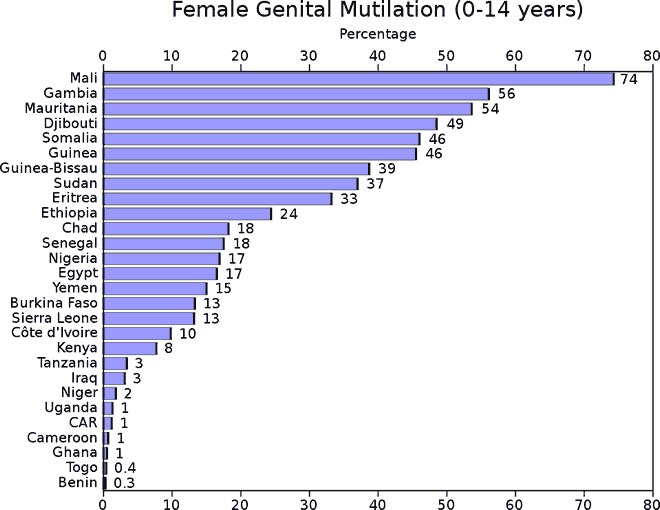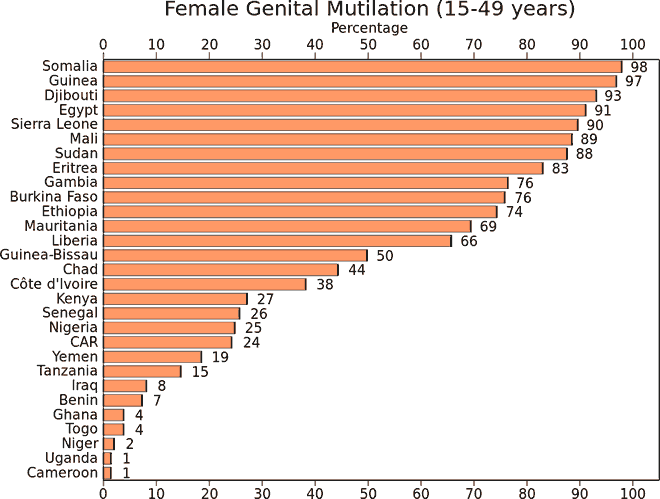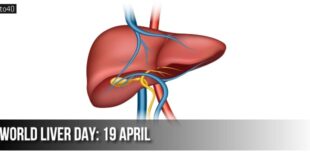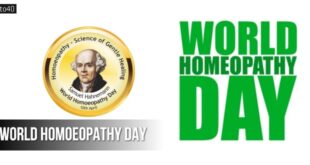International Day of Zero Tolerance for Female Genital Mutilation is a United Nations-sponsored annual awareness day that takes place on February 6 as part of the UN’s efforts to eradicate female genital mutilation. It was first introduced in 2003.
What is Female Genital Mutilation?
Female Genital Mutilation is the partial or complete removal of external female genital organs, using non-medical tools and under unhygienic conditions. The practice is prevalent in certain ethnic groups across the world and is believed to preserve the woman’s piousness, sanctity, and beauty. The methods of circumcision; however, depend on different ethnic groups and are rooted in their religious beliefs.
This barbaric custom, however, is deeply rooted in gender inequality and is a serious violation of human rights and the dignity of a woman; restricting her freedom and her right to life – in cases leading to death.
Ending Female Genital Mutilation by 2030:
Female genital mutilation (FGM) comprises all procedures that involve altering or injuring the female genitalia for non-medical reasons and is recognized internationally as a violation of the human rights, the health and the integrity of girls and women.
Girls who undergo female genital mutilation face short-term complications such as severe pain, shock, excessive bleeding, infections, and difficulty in passing urine, as well as long-term consequences for their sexual and reproductive health and mental health.
Although primarily concentrated in 30 countries in Africa and the Middle East, female genital mutilation is a universal problem and is also practiced in some countries in Asia and Latin America. Female genital mutilation continues to persist amongst immigrant populations living in Western Europe, North America, Australia and New Zealand.
To promote the elimination of female genital mutilation, coordinated and systematic efforts are needed, and they must engage whole communities and focus on human rights, gender equality, sexual education and attention to the needs of women and girls who suffer from its consequences.
International Day of Zero Tolerance for Female Genital Mutilation: History
One of the beliefs in support for this day acknowledges that culture is in “constant flux”, and with the concerns begetting FGM being so high-risk, the abolition of such practices must be prompt. This is a movement for the rights of women and their bodies, as well as the protection of their physical health- which can be tremendously affected later in life. These efforts are to benefit actions fighting violence against women and girls as a whole. Every Woman, Every Child (a global movement), reports that “Although primarily concentrated in 29 countries in Africa and the Middle East, FGM is a universal problem and is also practiced in some countries in Asia and Latin America. FGM continues to persist amongst immigrant populations living in Western Europe, North America, Australia and New Zealand”. In the United States alone, the recent reports of how many women and young girls are affected by FGM staggeringly tripled in numbers in comparison to the previous reports in 1990. About 120 to 140 million women have been subject to FGM over the years and currently at least 3 million girls are at risk each year, in accord to data presented by the World Health Organization (WHO). It is an effort to make the world aware of FGM and to promote its eradication. The World Health Organization has said that “Though the practice has persisted for over a thousand years, programmatic evidence suggests that FGM / C can end in one generation.”
Did You Know?
- In 2020 alone, there are 4.1 million girls around the world are at risk of undergoing female genital mutilation.
- According to UNFPA, the cost of preventing female genital mutilation is $95 per girl today.
- 30 countries where female genital mutilation is prevalent are experiencing high population growth, with at least 30 per cent of girls undergoing female population under the age of 15.
- Young people aged 15 to 19 in countries where female genital mutilation is prevalent are less supportive of continuing the practice than are adults aged 45 to 49.
- In many countries where female genital mutilation is prevlant, young girls have a dramatically increased chance of growing up without the risk of undergoing this harmful practice compared to their mothers and grandmothers.
According to WHO, the procedures of female genital mutilation is classified into 4 major types:
- Type 1: It is known as clitoridectomy. In this type, the clitoris is partially or totally removed which is a small, sensitive and erectile part of the female genitals. In very rare cases only the prepuce that is the fold of skin surrounding the clitoris is removed.
- Type 2: It is known as excision. In this clitoris is partially or totally removed and the labia minora that is the inner folds of the vulva, with or without excision of the labia majora, the outer folds of skin of the vulva.
- Type 3: It is known as infibulation. In this process, the vaginal opening is narrowed through the creation of a covering seal.
- Type 4: It consists of all other harmful procedures to the female genitalia for a non-medical purpose. Like pricking, piercing, incising, scraping and cauterizing the genital area.
Health Risks:
Short term:
Severe pain, excessive bleeding (hemorrhage), shock, genital tissue swelling: due to inflammatory response or local infection, infections, human immunodeficiency virus (HIV), urination problems, impaired wound healing: can lead to pain, infections and abnormal scarring, death (can be caused by infections such as tetanus and hemorrhage), and psychological consequences such as trauma (many women describe FGM as a traumatic event.)
Long term:
Pain, painful urination, menstrual problems, keloids, human immunodeficiency virus (HIV), obstetric fistula, perinatal risks, and psychological consequences such as post-traumatic stress disorder (PTSD), anxiety disorders and depression. Infections are also a common effect of these procedures (often happening more than once), which include chronic genital infections, chronic reproductive tract infections, and urinary tract infection. Female sexual health is also affected long term, presenting issues such as decreased sexual desire and pleasure, pain during sex, difficulty during penetration, decreased lubrication during intercourse, reduced frequency or absence of orgasm (anorgasmia). Lastly, Obstetric complications often result post FGM procedures, some of which including an increased risk of difficult labour, having a Caesarean section performed, experiencing postpartum hemorrhage, or a recourse to episiotomy.
Observing the day:
The International Day of Zero Tolerance for FGM is not a public holiday, but a day of international observation. This day is a part of a combined effort by the UN to meet one of its “Sustainable Development Goals, which the elimination of FGM is a key target under Goal 5.
The observance of FGM continues to be practiced every year on February 6th and will be greatly pursued by the UN and other social activism parties in efforts to eliminate FGM by the year 2030. Awareness has been rising for FGM with constant pursuit of activism. On Zero Tolerance Day, February 6, 2015, it was reported by Equality Now that “the White House, the Department of Justice, the U.S. Agency for International Development, the Ambassador at-Large for Global Women’s Issues, and the USCIS all issued statements condemning FGM from being practiced.”
Themes:
- 2024: Her Voice. Her Future
- 2022: Accelerating Investment to End Female Genital Mutilation.
- 2021: No Time for Global Inaction, Unite, Fund, and Act to End Female Genital Mutilation.
- 2020: Unleashing Youth Power: One decade of accelerating actions for zero female genital mutilation.
- 2018: End of FGM is Political Stance.
- 2017: Working Together to End FGM in Kenya by 2030.
- 2016: Building a solid and interactive bridge between Africa and the world to accelerate ending FGM by 2030.
- 2015: Mobilization and Involvement of Health Personnel to Accelerate Zero Tolerance to Female Genital Mutilation.
- 2014: Preserve the best in culture and leave harm behind.
औरतों का खतना कैसे होता है?
आम तौर पुरुषों का ख़तना किया जाता है लेकिन दुनिया के कई देशों में महिलाओँ को भी इस दर्दनाक प्रक्रिया से गुजरना पड़ता है। संयुक्त राष्ट्र की परिभाषा के मुताबिक, “एफ़जीएम की प्रक्रिया में लड़की के जननांग के बाहरी हिस्से को काट दिया जाता है या इसकी बाहरी त्वचा निकाल दी जाती है”। संयुक्त राष्ट्र की परिभाषा के मुताबिक, “एफ़जीएम की प्रक्रिया में लड़की के जननांग के बाहरी हिस्से को काट दिया जाता है या इसकी बाहरी त्वचा निकाल दी जाती है”। यूएन इसे ‘मानवाधिकारों का उल्लंघन’ मानता है। दिसंबर 2012 में संयुक्त राष्ट्र महासभा ने एक प्रस्ताव पारित किया जिसमें एफ़जीएम को दुनिया भर से ख़त्म करने का संकल्प लिया गया था। महिला खतना के बारे में जागरूकता बढ़ाने और इसे रोकने के मकसद से यूएन ने साल की 6 फ़रवरी तारीख़ को ‘इंटरनेशनल डे ऑफ़ ज़ीरो टॉलरेंस फ़ॉर एफ़जीएम’ घोषित किया है। लड़कियों का खतना किशोरावस्था से पहले यानी छह-सात साल की छोटी उम्र में ही करा दिया जाता है। इसके कई तरीके हैं। जैसे क्लिटरिस के बाहरी हिस्से में कट लगाना, या इसके बाहरी हिस्से की त्वचा निकाल देना। खतना से पहले एनीस्थीसिया भी नहीं दिया जाता। बच्चियां पूरे होशोहवास में रहती हैं और दर्द से चीखती हैं। पारंपरिक तौर पर इसके लिए ब्लेड या चाकू का इस्तेमाल करते हैं और खतना के बाद हल्दी, गर्म पानी और छोटे-मोटे मरहम लगाकर दर्द कम करने की कोशिश की जाती है। बोहरा मुस्लिम समुदाय से ताल्लुक रखने वाली इंसिया दरीवाला के मुताबिक ‘क्लिटरिस’ को बोहरा समाज में ‘हराम की बोटी’ कहा जाता है। बोहरा मुस्लिम मानते हैं कि इसकी मौजूदगी से लड़की की यौन इच्छा बढ़ती है।
 Kids Portal For Parents India Kids Network
Kids Portal For Parents India Kids Network
